Django Development Services: The Complete Buyer’s Guide
Django Development Services: The Complete Buyer’s Guide
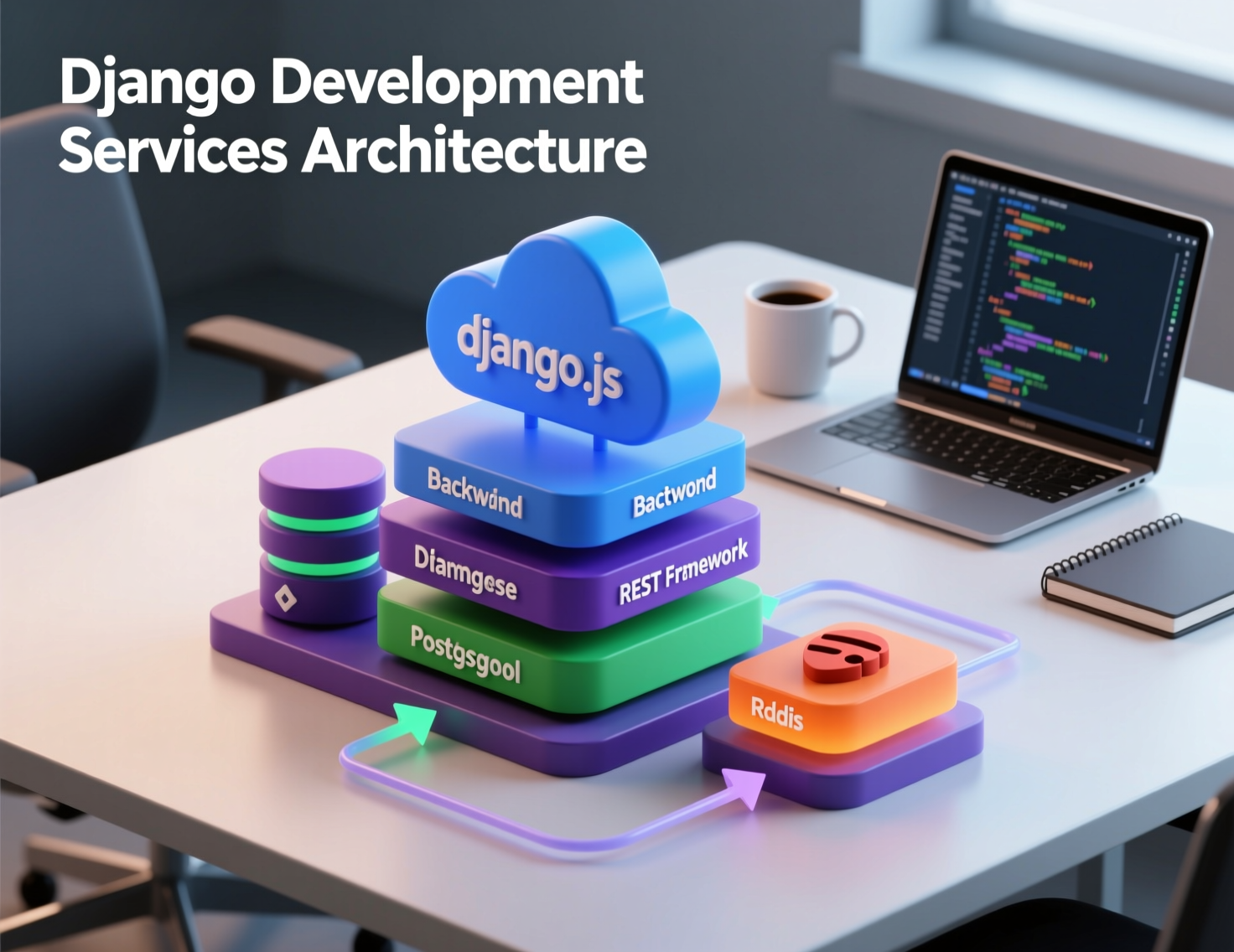
Django Development Services in 2025: What’s Included, How to Choose a Vendor, and What It Should Cost
Introduction
If you’re deciding whether Django development services are right for your next product, here’s the short answer: Django is a battle-tested Python web framework ideal for secure backends, rapid prototyping, and scalable web apps. The best Django partners deliver production-ready APIs, clean admin experiences, and cloud-native DevOps plus transparent pricing, timelines, and SLAs.
Below, we unpack exactly what “Django development services” include, how to evaluate vendors in the USA and Europe, realistic 2025 budgets, and the security/DevOps standards you should require. Use the checklists and tables to compare agencies apples-to-apples and move from shortlist to signed SOW confidently.
What “Django Development Services” Actually Include
At its core, Django development services cover the planning, design, development, testing, deployment, and support of web applications built on the Django Python web framework. The Django Software Foundation stewards Django’s open-source ecosystem, emphasizing security, stability, and documentation key reasons enterprises still choose it for complex, secure backend development (entity mention). Moreover, modern Django projects typically include Django Rest Framework (DRF) for APIs, Celery + Redis for async jobs, and PostgreSQL for relational data.
Core Capabilities: Backend, DRF APIs, Admin, Integrations
Secure Backend Development
Domain models, business logic, RBAC, and ORM-driven data access using PostgreSQL. Django’s batteries-included nature accelerates rapid prototyping without sacrificing structure.
Mini snapshot
A B2B SaaS replaced a legacy PHP backend with Django + Postgres; result: 40% faster feature releases and a unified role-based access model.
Django Rest Framework (DRF) APIs
Token/OAuth2 auth, pagination, serializers, and throttling out of the box. DRF simplifies versioned REST APIs and paves the way for future GraphQL gateways if needed.
Admin Experience
The Django Admin delivers instant CRUD, audit logs, and staff workflows. Teams often extend it with custom dashboards, approval flows, and bulk actions one of Django’s underrated superpowers.
Integrations
Payments: Stripe, PayPal.
Messaging/Email: SendGrid, Twilio.
Observability: Sentry, Prometheus/Grafana.
Authentication: SSO/SAML/OIDC via Okta/Azure AD.
Infra: Docker, Kubernetes (K8s), Nginx.
These ensure your app speaks enterprise language from day one.
Extended Services: UX, Cloud, CI/CD, QA, Support
Product/UX
Discovery workshops, user stories, information architecture, and Figma prototypes to validate flows before code.
Cloud Architecture
AWS, Google Cloud, Microsoft Azure reference architectures for Django (ASGI/WSGI), managed Postgres (RDS/Cloud SQL), cache layers (Redis), object storage (S3/GCS), CDNs, and zero-trust networking.
CI/CD
GitHub Actions/GitLab CI pipelines for linting, tests, security scans, and blue-green or rolling deploys.
QA & Automation
Pytest, factory-boy, Playwright/Selenium for end-to-end, plus load testing with Locust or k6.
Support
Tiered SLAs (8×5, 24×7), on-call rotations, and patch windows.
Deliverables & Artefacts: SOWs, Roadmaps, SLAs
Expect a professional partner to provide
SOW
Scope, assumptions, out-of-scope, acceptance criteria, and change-control.
Roadmap
Milestones, sprint plan, demo cadence, and dependencies.
Architecture Doc
Diagrams, data model, integration contracts, security posture.
Runbooks
Deployment, rollback, and incident response.
SLAs
Response/Resolution targets, uptime objectives, maintenance windows.
How to Evaluate a Django Development Company
Choosing a Django development company is about capability, proof, and fit. Score vendors on competency (stack proofs), quality signals (seniority mix), and evidence (portfolio + references). Ask them to walk through a recent DRF project, how they scaled background jobs with Celery, and how they orchestrate deploys on Docker/K8s.
Team Composition & Seniority Mix.
Balanced ratios
1 Tech Lead per 3–5 engineers; Seniors drive architecture, mids ship features, juniors add velocity with code reviews and pairing.
Specialists on call
DevOps, Security, and Data engineering bench.
Product/Design
If your scope includes UX or growth loops, ensure PM and UX capacity.
Mini snapshot: A US fintech staffed a squad (1 TL, 2 Senior, 2 Mid, 1 QA, 0.5 DevOps) to deliver a loan-origination MVP in 12 weeks; day-2 features shipped 30% faster than a previous vendor due to dedicated DevOps.
Technical Stack Proofs: DRF, Celery, Redis, Postgres, Docker/K8s
Ask for live proofs
DRF code sample
Serializers, viewsets, throttling, versioning strategy.
Celery + Redis
Task reliability (acks_late), retries, dead-letter queues.
PostgreSQL
Migrations (Alembic equivalent in Python world is Django’s built-in), query plans, and partitioning approach.
Docker/K8s
Helm charts, health/readiness probes, secrets management, and autoscaling policies.
Observability
Tracing (OpenTelemetry), metrics (Prometheus), logs (ELK/Loki), alerting rules.
Portfolio & References: What “Good” Evidence Looks Like
Evidence you can verify
Public URLs, sanitized repos, and architecture diagrams.
Contextual outcomes
“Reduced checkout latency 22%” beats “improved performance.”
Reference calls
Speak to a PM and an engineer; confirm delivery cadence, incident handling, and change-request process.
Security posture
Ask for their secure SDLC checklist and last dependency-audit report.
Cost & Engagement Models in 2025
Pricing depends on scope, compliance, and velocity. The figures below reflect common ranges we see across USA/Europe for Django web apps in 2025; treat them as planning bands, not quotes.
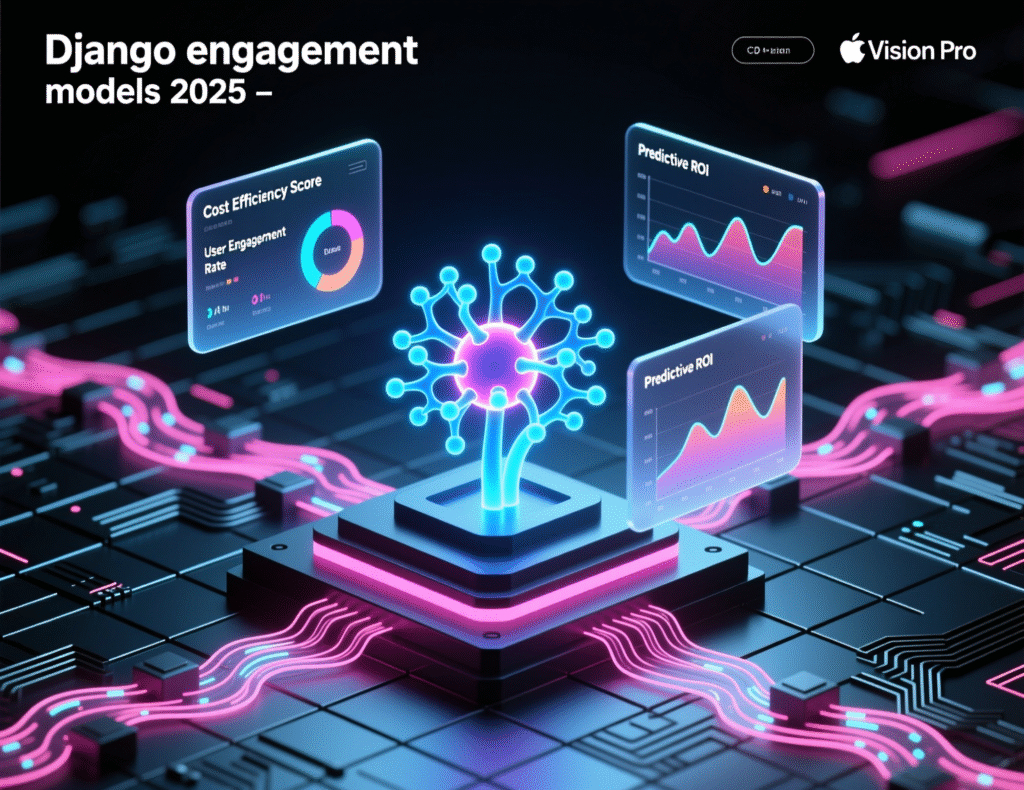
Typical Ranges: MVP, Growth-Stage, Enterprise Enhancements
MVP (8–12 weeks)
$60k–$140k (US/EU blend).
Growth-Stage (3–6 months)
$180k–$450k for scale-up features, SSO, billing, analytics.
Enterprise Enhancements (6–12 months)
$500k–$1.2M for complex integrations, SOC 2 hardening, multi-region HA.
Fixed-Bid vs Time & Materials vs Dedicated Team (Commercial Risk/Control Trade-offs)
| Model | Best For | Risk Profile | Control/Visibility | Typical Terms |
|---|---|---|---|---|
| Fixed-Bid | Well-defined MVP | Scope creep risk if requirements shift | Medium | Milestones, change orders |
| Time & Materials (T&M) | Evolving backlog | Cost variance if priorities churn | High | Hourly/daily rates, sprint demos |
| Dedicated Team | Long-running roadmaps | Higher monthly commit | Very High | Monthly retainer, blended rates |
Guidance
Start fixed-bid for a narrow MVP, then move to T&M or a dedicated team once product-market fit emerges and priorities change weekly.
Cost Drivers: Scope, Compliance, Integrations, Velocity
Scope complexity
Multitenancy, workflows, and data models drive story points.
Compliance
GDPR/CCPA, SOC 2, HIPAA-lite scoping adds design reviews, logging, and controls.
Integrations
Payments (Stripe/PayPal), tax/shipping, ERP/CRM, and data pipelines.
Velocity
Bigger squads ship faster but increase burn; use cost-per-outcome metrics (e.g., cost per feature or per conversion uplift).
Security, Compliance & DevOps for Django Projects
Security and reliability aren’t add-ons; they’re table stakes. Demand a plan aligned with OWASP best practices, explicit compliance requirements, and DevOps maturity that scales.
App Security: OWASP, AuthN/Z, Secrets, Dependencies
OWASP Top 10
Mitigate injection, XSS, broken auth, SSRF.
AuthN/Z
Django auth + DRF permissions, OIDC for SSO, short-lived tokens, and least privilege.
Secrets
Vault/KMS, no secrets in ENV files, auto-rotation.
Dependencies
pip-tools, Dependabot, SBOMs (CycloneDX), and weekly CVE scans.
Data
Field-level encryption for PII; secure file storage; rate limits + CAPTCHA on auth endpoints.
Mini snapshot: Rate limiting + CAPTCHA reduced credential-stuffing attempts by ~70% post-launch.
Compliance by Market: GDPR/CCPA, SOC 2, HIPAA-Lite Scoping
GDPR (EU/UK) & CCPA (California)
Data mapping, DSR workflows, retention policies.
SOC 2
Change-management, access reviews, logging, and evidence collection.
HIPAA-Lite
If handling health-adjacent data without full PHI scope, clarify boundaries, BAAs, and encryption requirements; plan for a path to full HIPAA if needed.
DevOps Maturity: CI/CD, IaC, Monitoring, SRE SLIs/SLOs
| Capability | Baseline | Advanced |
|---|---|---|
| CI/CD | Lint + unit tests on PR; auto-deploy to staging | Canary/blue-green, feature flags, database migration gates |
| IaC | Terraform modules for VPC, DB, Redis | Policy-as-code, drift detection, multi-region failover |
| Observability | Sentry errors, uptime checks | OpenTelemetry tracing, SLI dashboards, SLO alerts |
| Operations | Manual runbooks | SRE playbooks, incident retros, error-budget-driven planning |
Use Cases & Industry Fit
Django shines when you need scalable web apps with robust admin tooling, clear data models, and fast iteration.
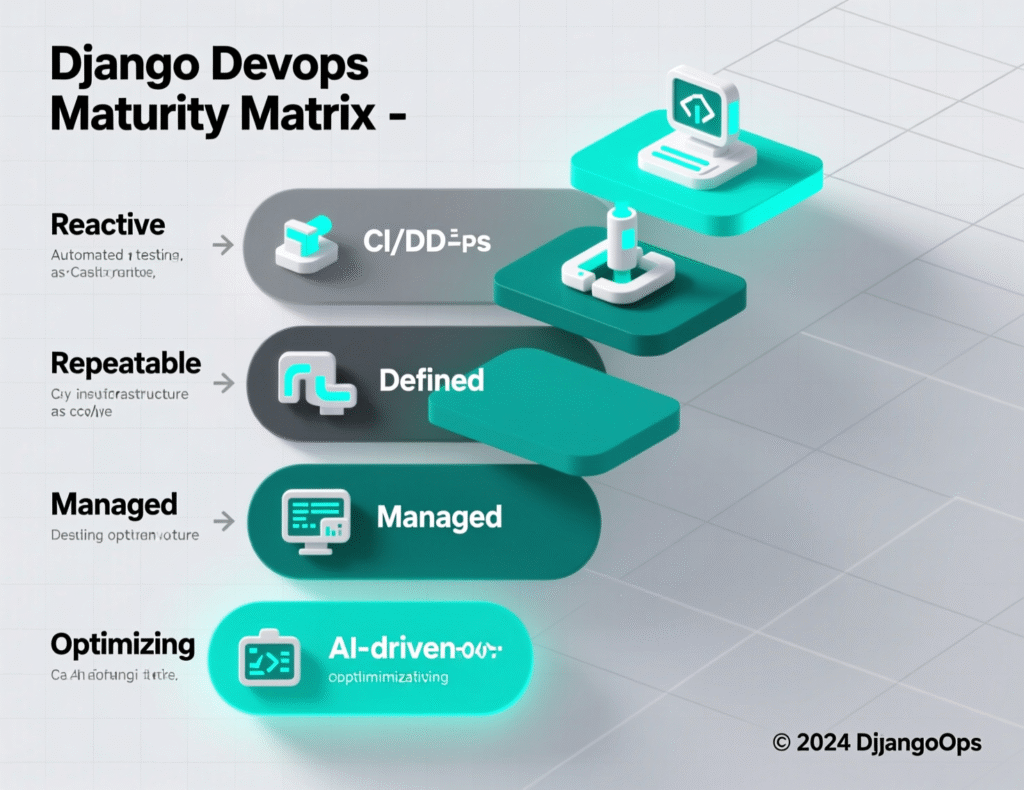
SaaS & Marketplaces: Multitenancy, Billing, Admins
Multitenancy
Schema or row-level isolation; per-tenant limits and theming.
Billing
Stripe subscriptions, metered billing, coupons, dunning.
Admin
Moderation queues, vendor onboarding, anti-fraud checks.
Mini snapshot: A marketplace added DRF rate limits and Celery fraud checks, cutting chargebacks by 18% in a quarter.
Ecommerce & Payments: Django + Stripe/PayPal, Tax/Shipping
Payment flows
PCI-aware design with hosted fields or redirects; webhooks for reconciliation.
Tax/Shipping
Avalara/TaxJar; Shippo/EasyPost integrations.
Catalog
Search with Postgres trigram or OpenSearch; promotion engines; order orchestration.
APIs & Microservices: DRF Gateways, Async Tasks, Caching
Gateways
DRF for REST; layer API keys + JWT + scopes.
Async
Celery + Redis for long-running jobs; idempotency keys; retry/backoff.
Caching
Per-view DRF caching, Redis cache, and Nginx micro-caching.
Inter-service
Event streaming (Kafka/Pub/Sub) when workloads demand it.
Building Your Shortlist: Where to Find and How to Verify
Find strong Django partners, then pressure-test with structured questions and a crisp RFP.
Directories & Reviews: Clutch, UpCity, TopDevelopers
Start with Clutch, UpCity, and TopDevelopers for geography, hourly rates, and verified reviews.
Cross-check LinkedIn for team size/seniority and GitHub for OSS participation.
GEO tip
For time-zone overlap with US hubs (New York, San Francisco, Austin), consider UK (London), Germany (Berlin), Poland (Warsaw), and Ukraine (Kyiv) for near-shore talent.
Screening Calls: Questions, Red Flags, Good Signs
Questions
Show us a DRF repo with versioning and throttling.
How do you scale Celery workers and manage retries?
What’s your rollback plan for failed DB migrations?
What SLOs do you commit to and how are they enforced?
Red flags
“We don’t need staging” or “We’ll share the prod DB for demos.”
No dependency-audit process; secrets in ENV files.
Vague estimates without assumptions.
Good signs
Clear risk register; proof of IaC; SLO dashboards; incident post-mortems.
RFP Essentials: What to Include for Apples-to-Apples Bids
RFP Checklist (copy/paste)
Business goals, target users, KPIs
Must-have features (MVP) + Nice-to-haves (phase 2)
Integrations (Stripe/PayPal, CRM/ERP, analytics)
Compliance scope (GDPR/CCPA, SOC 2)
Non-functional needs (latency, uptime, regions)
Team expectations (on-site/remote, overlap hours)
Deliverables (SOW, architecture doc, runbooks, SLAs)
Environments (dev/stage/prod), CI/CD, IaC requirements
Data model notes, migration constraints
Timeline windows, budget band, acceptance criteria
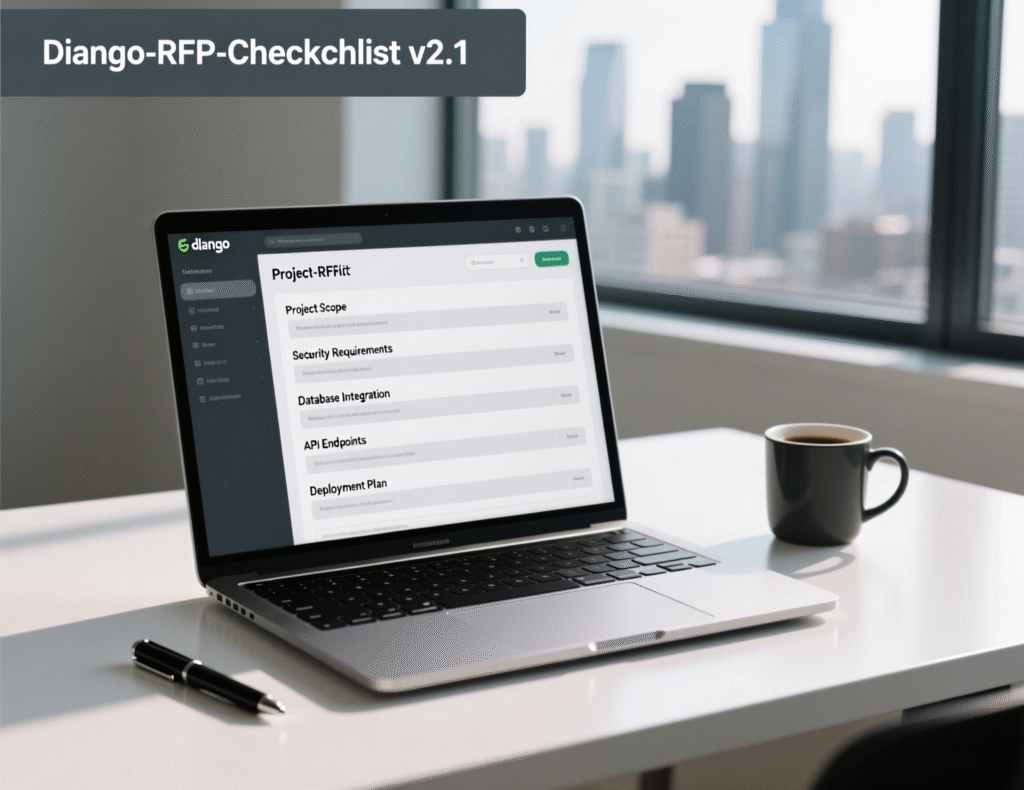
Timelines & Delivery Patterns
Typical MVP Timeline by Scope
Weeks 1–2
Discovery, architecture, UX flows, backlog.
Weeks 3–4
Auth, core models, admin, first endpoints.
Weeks 5–8
Integrations (payments/notifications), hardening, load tests.
Weeks 9–10
UAT, security review, docs, production cutover.
(Compressible with a larger team; trade-off is higher monthly burn.)
Iteration Cadence: Sprints, Demos, OKRs
Sprints
2-week cadence, demo every sprint, retrospective every second sprint.
OKRs
Tie features to activation, conversion, or retention; track with product analytics.
Change control
Backlog grooming and rolling quarterly roadmaps to keep teams aligned.
Handover & Support: Runbooks, On-Call, SLAs
Operational handover
Architecture overviews, dependency matrix, credentials escrow via Vault/KMS.
Runbooks
Scaling playbooks, incident checklists, disaster recovery tests.
Support
On-call rotations, paging policies, weekly bug triage, and quarterly post-mortems.
Summary & Key Takeaways
Bullet recap of selection checklist, budgets, and risk controls.
Scope
Expect DRF APIs, admin, integrations, CI/CD, IaC, QA, and SLAs.
Vendor fit
Validate stack proofs (DRF, Celery, Redis, Postgres, Docker/K8s) and referenceable outcomes.
Budget
MVP $60k–$140k; Growth $180k–$450k; Enterprise $500k–$1.2M
Security/Compliance
OWASP, secret hygiene, dependency audits; GDPR/CCPA and SOC 2 readiness.
DevOps
CI/CD gates, Terraform, observability SLIs/SLOs; clear rollback plans.
Process
2-week sprints, demos, runbooks, OKR outcomes over output.
Keyword Intelligence
Primary Keyword
django development services
LSI Keywords
python web framework; django rest framework (DRF); scalable web apps; rapid prototyping; secure backend development
Long-tail Keywords
how to choose a django development company in the usa; average cost to build a django web app in 2025; django vs flask for enterprise web development
Search Intents
Commercial Investigation; Transactional
Looking for a pragmatic partner to design, build, and scale your Django app? Our Editorial Analytics Team at Mak It Solutions can help you scope a crisp MVP or optimize an existing product. Contact us through the form below for a free technical consultation, or share your RFP to receive a detailed estimate within a business day. ( Click Here’s )
FAQs
Q : Is Django still a good choice for new SaaS products in 2025?
A : Yes. Django remains a top choice for SaaS because it pairs a mature ORM and admin with DRF for fast API delivery. Teams can prototype quickly, then harden for compliance with auditing, RBAC, and logging. Its opinionated design prevents architectural drift while staying flexible with Celery tasks and Redis caching. Compared to lighter microframeworks, you trade some initial weight for velocity and maintainability, especially when your roadmap includes billing, admin tools, and integrations.
Q : How do agencies handle scaling (caching, async tasks, horizontal growth) in Django?
A : Scaling usually mixes Redis caching (per-view or key-based), Celery for async workloads (emails, exports, ML inferences), and horizontal scaling via containers on K8s with autoscaling. Readiness probes protect nodes, while Postgres gets tuned with indexes, connection pooling (pgBouncer), and partitioning for large tables. Observability (Prometheus/Grafana + Sentry) pinpoints bottlenecks, and canaries reduce release risk. The result is consistent p95 latency under load with predictable scale-out costs.
Q : What’s the difference between hiring a freelance Django developer vs. an agency?
A : A freelancer can be cost-effective for small, well-scoped tasks or maintenance. An agency brings breadth: tech leads, DevOps, QA, security, and product/UX crucial for compliance and uptime. Agencies typically guarantee continuity (bench coverage) and SLAs; freelancers may offer flexible hours but limited redundancy. If your roadmap includes audits, multi-region deploys, or 24×7 support, agencies are safer; for minor features or bug fixes, a strong freelancer can be perfect. Blend models if needed: agency for platform, freelancer for extensions.
Q : How do I assess a vendor’s security posture for a Django project?
A : Ask for their secure SDLC: dependency scans, SBOMs, threat modeling, and how they handle secrets (KMS/Vault). Require evidence of OWASP coverage, SSO/least-privilege access, and incident management playbooks. For compliance, request a SOC 2 readiness checklist and DPIA templates for GDPR. Verify they run staging with masked data and conduct regular backup/restore drills. A short tabletop exercise during discovery can reveal whether the team can manage a real incident.
Q : Which industries see the best ROI with Django (with example features)?
A : Fintech
Onboarding flows, KYC integrations, ledger services.
Healthcare-adjacent
Scheduling, secure messaging, audit logs.
Marketplaces/SaaS
Multitenancy, billing, moderation dashboards.
EdTech
Content authoring, assessments, proctoring APIs.
Because Django accelerates admin and CRUD-heavy workflows, teams ship earlier and iterate faster improving activation and retention. Add DRF for partner APIs and Celery for batch jobs to create a durable platform for growth.
